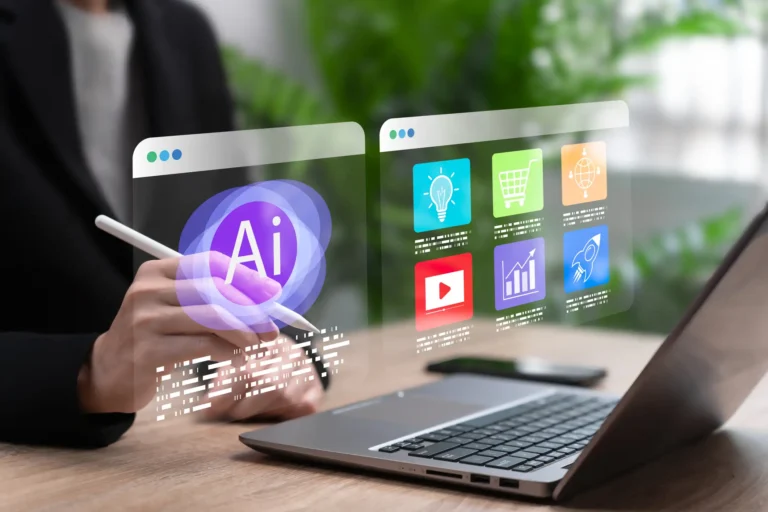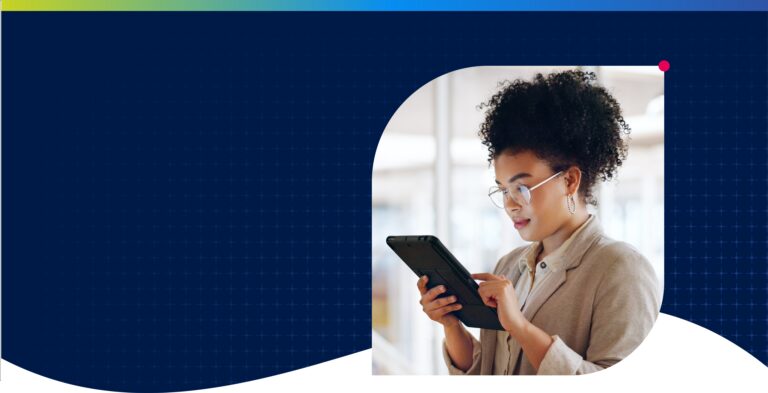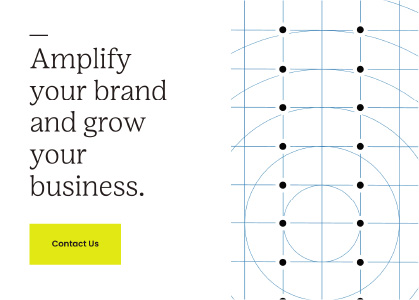This article was written immediately following the 2020 lockdown. We invite you to take a retrospective look at how AvreaFoster clients adapted to the unprecedented.
We routinely check in with clients and prospects, but during the lockdown in 2020, our calls to clients took a different tone. We were no longer inquiring about the status of branding or marketing projects, nor about key challenges the businesses were facing. We were all facing the same challenge.
COVID-19 forced every business across the globe to halt and pivot operations and communications at the same time. At AvreaFoster, we wanted to know what communications teams were doing to tackle the challenge, with the hope of sharing experiences that might help others navigate unprecedented uncertainty. In what was originally a two-part series, we presented the lessons we learned. Interviews originally aggregated in 2020.
01
Communications Strategies Get a Shake-Up
There may have been confusion all around at the onset of the virus, but that’s not a luxury afforded to corporate communications. From day one, these professionals were tasked with articulating a plan to stakeholders, namely employees. The following recounts a few key strategies they used in the beginning and throughout the unexpectedly lengthy impact on business.
Kimberly-Clark’s Communications Strategy Goes Global
Chris Wyse, VP of Corporate Communications for Kimberly-Clark, stifles a faint laugh through the phone when a comment is made about sales of toilet paper over the past few months. The virus, of course, was no laughing matter to the multinational personal care corporation that operates 90 manufacturing facilities worldwide — some of which are in China. “A global crisis team had been set up early on due to our mills in China,” said Wyse, “but as it became clear that things were accelerating, we needed a more robust plan.” Kimberly-Clark established what Wyse referred to as “very clean and clear communications.”- An ongoing video series featuring the CEO was created to communicate an outline of protocols for employees to follow. This series, to which Wyse has played writer, cameraman and sound engineer, has evolved to communicate a breadth of messages, from training and procedures for staying safe and healthy to celebrating essential workers — those continuing to work at the mills.
- Recurring quarterly meetings with team leaders are held at nearly twice the frequency they were pre-COVID-19. The company also went further down in the organization, including “anyone who manages even one person,” Wyse said.
- Twice-weekly all-employee meetings feature COVID-19 updates.
- The company’s principal portal has been leveraged as a COVID-19 employee resource, populated with an ongoing stream of information, FAQs, answers to policy questions or instructions on how to get connected to work remotely.

Thought Leadership Takes Center Stage at Acosta
Vilma Consuegra, SVP of Business Development & Corporate Marketing at Acosta, implemented similar strategies at the onset of the virus. “It was a great time to reach out to clients,” Consuegra said. “We took the opportunity to publish relevant thought leadership.” Acosta, the full-service sales and marketing agency, partners with consumer packaged goods (CPG) brands and major grocery retailers to drive performance across North America. Acosta became a catalyst for industry conversations almost overnight.
- Acosta created a 10-part weekly webinar retailer series in which a major grocery chain, such as Albertsons or Wakefern, would join a call and share what they were seeing in their stores, their shortage predictions and coordination efforts with Acosta’s clients on inventory strategies. The series proved invaluable, attracting roughly 600 to 800 participants every week.
- Driving Acosta’s thought leadership were insights gleaned from weekly surveys. “Shopper habits were changing week to week,” Consuegra said. “We leveraged our shopper community to get a pulse on what they were doing, thinking, and then we shared that information back out to our clients.”

Toyota Motor North America Leverages a Mobile App
Kelly McNeff, VP of Corporate Communications at Toyota Motor North America, had unique challenges to overcome from the very beginning: getting the organization’s manufacturing workforce, which covers 14 facilities, on one communications channel. “It’s been relatively easy to communicate with our corporate employees working remotely,” McNeff said. “They have laptops and are used to frequent communications. Our manufacturing workforce, however, sees that as an imposition. It’s been a much more difficult exercise to reach them.” To overcome that, the auto manufacturer uses a mobile app.
- Toyota created a very intentional campaign to reach its manufacturing team members through the app, sending videos from the plant president weekly and the head of manufacturing almost every other week.
- Also through the app, Toyota sends daily updates about what they’re doing to keep plants sanitized, pictures of the things they have put in place to protect workers, and instructions on how to stay fit and healthy. “We refer to our manufacturing workforce as industrial athletes,” McNeff said. “They move their bodies to work and we have to keep them in shape.” The company’s efforts proved invaluable, as Toyota increased use of the app by its manufacturing workforce from 30% to nearly 100%.
- In addition, Toyota produced a video series from 30 executives, pushing out several a week in an effort to ensure a steady stream of information.
- Perhaps one of the most phenomenal internal communications efforts by Toyota was driven by the manufacturer’s culture it refers to as mendomi care. In Japanese, mendomi means to take care of employees as if they are family. That’s just what team leaders did every single week when they reached out to 40,000 employees with a phone call. And McNeff says that has made all the difference.

Tyler Technologies Gets Busy and Keeps It Personal
A leading developer of software for the public sector, Tyler Technologies went nearly overnight from asking its 5,300 employees to test their remote connection from home to asking them to stay home. They formed a COVID-19 Executive Task Force made up of the C-suite and operation group presidents, which included Samantha Crosby, Chief Marketing Officer. “We were meeting every single morning for the first three weeks,” Crosby said. “Then we moved to three days a week, then to twice a week, and today we’re still meeting weekly.” Over the past two and a half months, Crosby estimates the company has created more than 140 pieces of unique communications.
- An entire microsite was created for employees to access critical information, from new protocols and tips to stay healthy to benefits information about medical and mental health services.
- Simultaneously, the company added a COVID-19 response page to its website designed to support its municipal clients. The software developer even went so far as to escalate the completion and launch of a virtual courts application to help their courts and justice clients keep their operations running during the lockdown.
- The company also leveraged CEO Lynn Moore as a guiding voice, producing videos of the leader talking about the company’s plans to protect employees, communicate with clients and create a connected community while working remotely. The positive response from employees was overwhelming.
- The company weaved its authentic voice into its posts on social media, too, which have been some of Tyler’s most successful.
02
Looking Back & Heading Back In
As a new normal was established for many business operations, communications leaders had the chance to look back and consider what they had learned, and what positives had come out of the crisis. In addition, many had begun plans to bring employees back into the office.
Kimberly-Clark Goes Deeper and Finds Something Better
Chris Wyse, VP of Corporate Communications, recounts, “Suddenly a global pandemic hits and you’re like, ‘Cut half of everything that we had in the lineup and make as much as we possibly can of just these things!’” As a leader in paper-based consumer products, Kimberly-Clark was under tremendous pressure to meet high demands. What they did in their mills to ensure they could meet those demands — something Wyse described as “radically streamline and simplify work processes” — they also did with their communications process. “Our editorial planning process before was somewhat siloed,” Wyse said. “Now our content creation team is on the phone three times a week, working at an incredible pace and collaborating like never before.” That is something Wyse later refers to as true “esprit de corps!”
As an added benefit, the choice to involve decision-makers deeper into the organization at the onset of communications has emboldened the company’s culture, reinforcing empowerment and enabling a more agile workforce.

Boeing Commercial Airplanes Finds a Healthier Workforce
As the world begins to reopen, The Boeing Company is predicting that travel will also resume. The airplane manufacturer has been working closely with its customers on a communications strategy designed to restore confidence in the flying public. It has also been managing a mix of remote employees and factory team members. But Conrad Chun, VP of Communications for Boeing Commercial Airplanes, is now working on a plan to bring remote employees back to the office. His reasons for doing so are twofold. “I think we’re actually working longer hours,” Chun said. “I think because we’re all reachable, it lengthens the workstream. There seems to be no end of the day until you sleep.”
In addition to mental exhaustion, Chun is concerned about efficiencies. While Boeing has used every communications channel imaginable to stay connected to its dispersed workforce, Chun feels it doesn’t have the same impact as an in-person meeting. “As a leader of people, your tools are taken away in a purely digital environment,” he said. “Being able to stop by and see how an employee is doing, have a frank conversation about performance. It’s just different than what might be perceived as yet another phone call.”
Although Boeing is taking a phased approach to bringing back its remote workforce, making sure employees are safe and feel safe, Chun says it won’t be a one-size-fits-all strategy. “I think this situation serves to remind us that every one of our employees is different,” he said. “There is no one thing that will work for everyone.”

Celanese Finds Its Corporate Spirit
Celanese, a global chemical and specialty materials company, has begun focusing on change communications in order to bring its remote workforce back to its offices. Jamaison Schuler, Senior Director of Global Communications, says it will be a phased approach. “We’ll most likely do it in waves, perhaps every 30 days until everyone is back,” Schuler said. The company has established on-site action teams to figure out a detailed plan as well as executed employee surveys to gauge their feelings about returning. “I think people are anxious for a plan,” he said, “but there are expectations we know and those we don’t know.” As Schuler reflects on the activities over the past several months, he notes that it’s been interesting what’s dropped off, what was missed, but also what has persevered: the Celanese spirit.

Toyota Motor North America Plays the Longest Game
At Toyota Motor North America, communications are still leveraging a personal approach. However, during the 40,000 weekly phone calls team leaders make to employees at home, the conversation has turned to coming back to the office. “We’ve been trying to understand what their concerns are, what would make them feel safe coming back to work,” said Kelly McNeff, VP of Corporate Communications. While McNeff acknowledges working remotely has been fine, there is internal alignment that it’s time to start the return process. The company has roughly 30 committees working for the past seven weeks on a plan to bring remote employees back in the office — though it won’t happen overnight.

Tyler Technologies Takes an Individual Approach
Thoughts on a corporate return at Tyler Technologies are similar, though the company hasn’t missed a beat working remotely. “It’s been really interesting to see just how the productivity levels have shifted in a positive way for some groups,” said Samantha Crosby, Chief Marketing Officer. “Some departments within the company have even shown productivity increases while working from home.” Nevertheless, the company is working on a return-to-office plan.
“We will have three phases, the first reflecting a maximum capacity of 25%,” Crosby said. She added that the actual numbers of employees returning during phase one are around 10% currently. The company launched several internal surveys, one recently to gauge employee desire to return to the office. The results indicated there was a lot of anxiety and trepidation about returning. Therefore, Tyler Technologies is factoring in both its employees’ ability and their desire to return during the initial phase.




